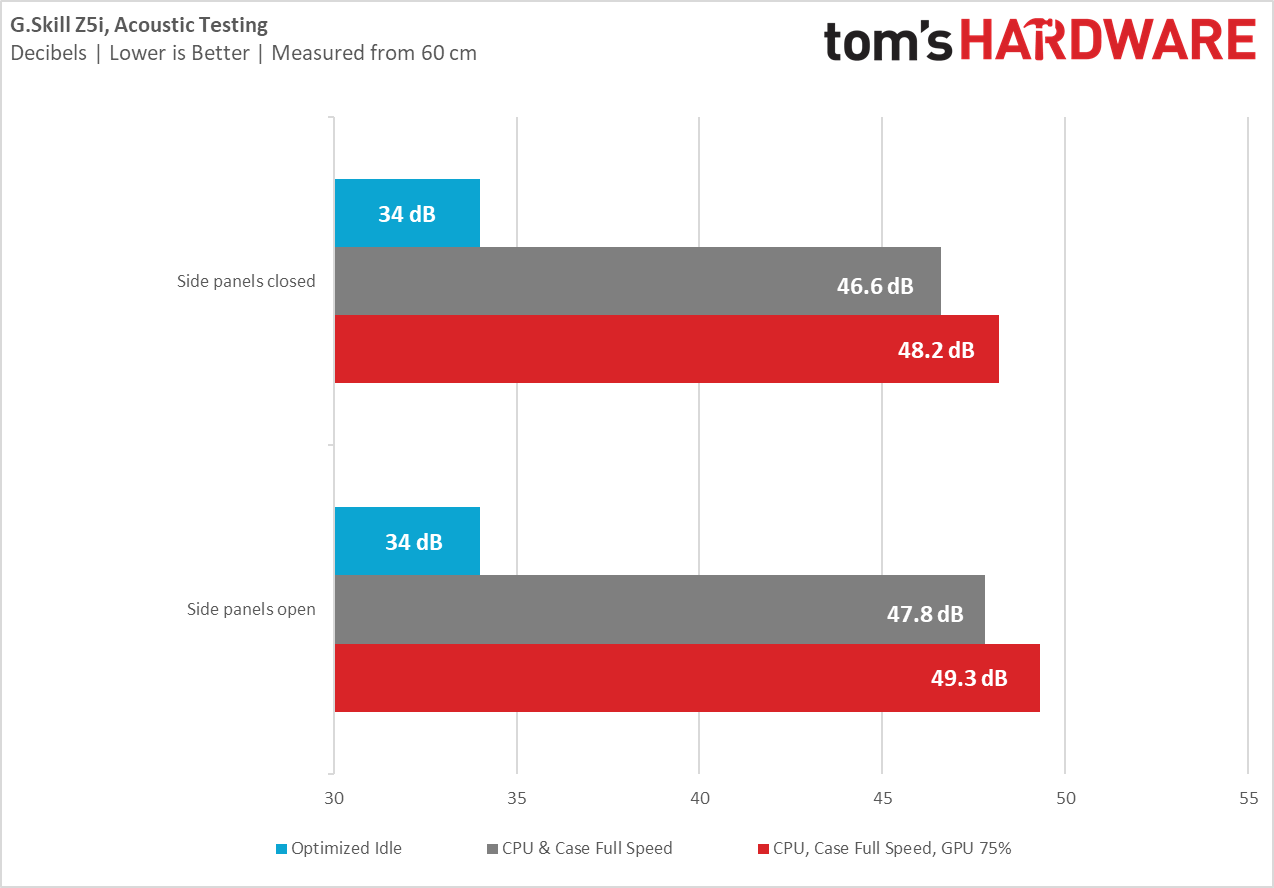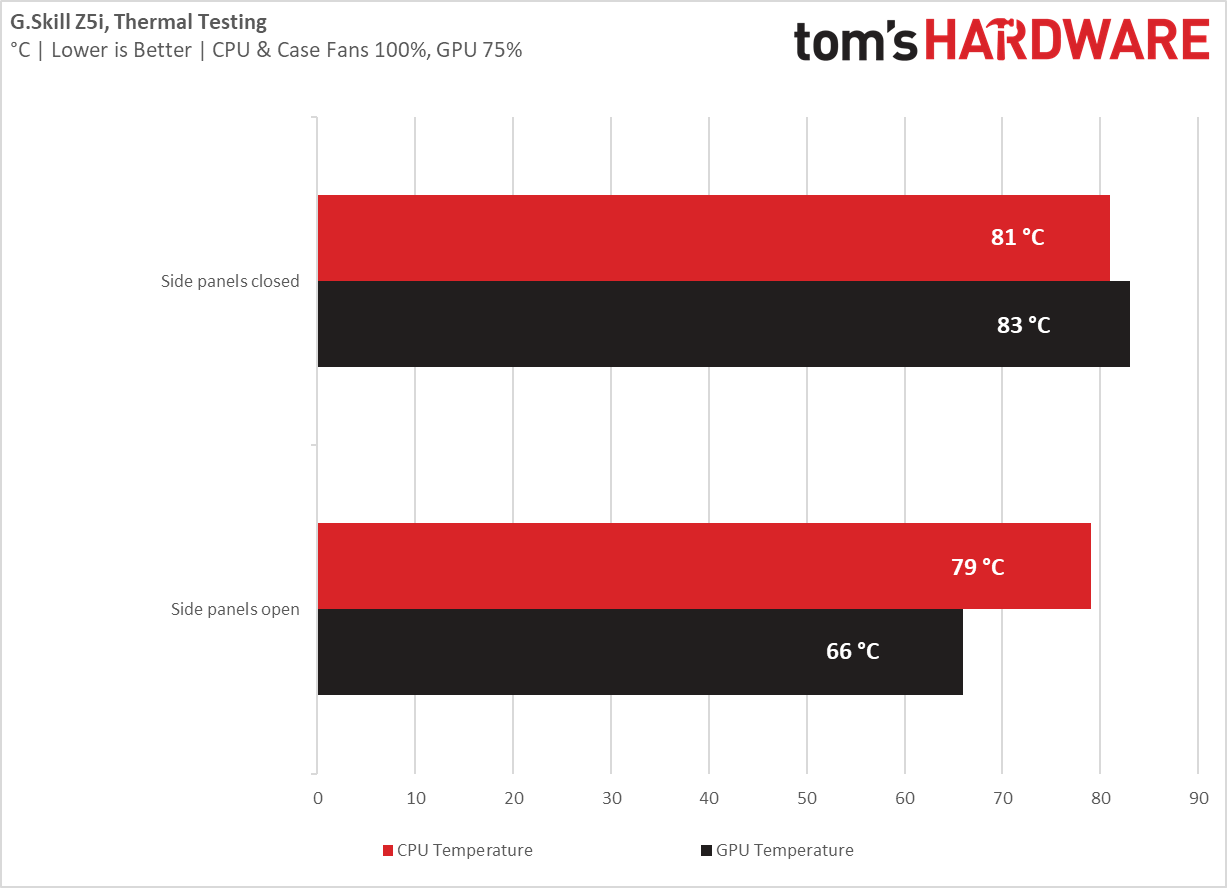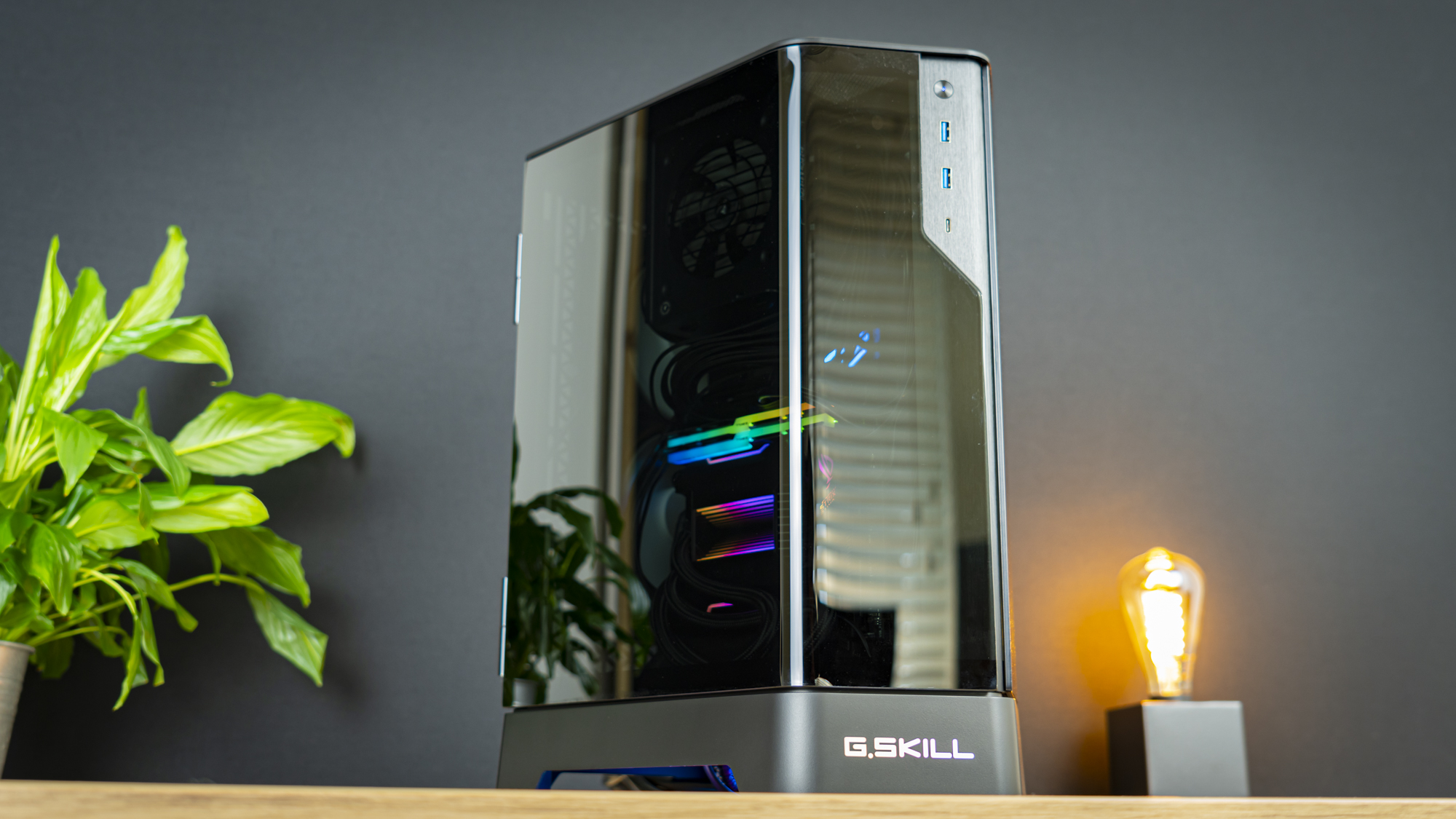Why you can trust Tom's Hardware
For thermal and acoustic testing, other than fan speeds, we’re running the hardware we have entirely at stock settings to mimic the results you can achieve as closely as possible.
Acoustic Results
For the optimized idle, I made sure to run all the system’s fans at the lowest speeds they would spin at, utilizing Zero-RPM modes where possible with the GPU and power supply. Then, I run the CPU cooler and case fans at maximum speeds, but because this case doesn’t have its own fans, the measurement below features just the noise from the AIO. Lastly, I add the GPU to the mix at 75% fan speed as this is the highest most GPUs generally ramp up to.
In the optimized idle result, the system is inaudible, indistinguishable from the noise floor of the room, both with the case panels on and off. This is no surprise thanks to all the Zero-RPM devices, so not really a result owed to the chassis. Adding the CPU and GPU to the mix makes for a rather loud system, and while the case’s side panels do dampen some noise, don’t expect any miracles. For quiet systems, be sure to focus on silent fans and setting up a fan curve that works efficiently.
Thermal Results
For the thermal tests, all case and CPU fan speeds are set to 100 percent, and the GPU fan is set to run at 75 percent fan speed to ensure it can always meet its power target.
With the side panels open, we get a pretty good idea of what the system would perform like under open test bench circumstances, to help illustrate the thermal hampering caused by the glass panels. The CPU doesn’t run all that much warmer with the doors closed, but the GPU suffers a significant increase in temperature with the system closed off. This is no surprise, as the glass panels are quite restrictive, and the only ventilation present is provided by the AIO. If you want a quieter system than we have here today, focus on low-TDP components with an AMD CPU and up to a mid-tier GPU. The case can handle high-end hardware, but it will get loud.
Conclusion
Starting with the good stuff, the G.Skill Z5i offers a sweet appearance with oh-so-beautiful bent glass doors, and it’s really a sight to behold as an ITX chassis. It’s not too big (though far from as small as extremely compact ITX cases), and offers a pleasant building experience, to the extent that that’s possible with ITX. It’s also fairly priced at $199, which while expensive for a case, but isn’t outlandish in the world of ITX, especially considering those glass panels aren’t cheap. Oh, and the RGB implementation looks stunning, both the underglow and the way RGB components shine through the tinted glass.
But this is far from a perfect case. The biggest issue it has revolves around its cooling design – yes, it supports up to a 280mm radiator at the back, so your CPU will be fine, but the GPU is starved for air due to the fact that the only cooling provided is from the AIO – though keep in mind that our test with an RTX 3080 Ti is a lot to throw at a case like this. That, and there is no proper dust filtration.
Get Tom's Hardware's best news and in-depth reviews, straight to your inbox.
So, if you want to build a good-looking system that you only run for a couple hours once in a while to play games on weekends, I see no reason to pass on the G.Skill Z5i. But if you’re a power user that runs their PC for hours on-end and requires good thermals, acoustics, and filtration, then you should opt for something a little more practical, even if that may mean sacrificing looks.
Niels Broekhuijsen is a Contributing Writer for Tom's Hardware US. He reviews cases, water cooling and pc builds.
-
velocityg4 Man, that'll look great on my floor behind my desk.Reply
On a more serious note. The GSkill logo ruins the looks of the case. I don't know why so many cases do this. It looks tacky. It should just be in small print hidden with the serial number inside the case.
It's not as though it's some household brand either. People might want the Nike swoosh or Apple logo to impress for some reason. But some brand only a small fraction of people ever heard of. Not so much. -
Sleepy_Hollowed This is a very niche design, and if it allowed a couple of more fans I would give it a try. Anyone that doesn’t need any more cooling definitively should consider it, it looks good and looks solid.Reply -
gamebynight Great review. I also just want to say, stunning photography. I thought those were press shots at first, then saw they were taken by the author. Well done!Reply -
rchris Do you have any information about when it will be available? G-Skill's press release for this case came out months ago, but I don't see the case offered anywhere.Reply




